Ho Chi Minh City is a captivating destination that blends Vietnam’s rich history and diverse spirituality. Visitors can explore the iconic Cu Chi Tunnels, a vast underground network that sheltered soldiers during the Vietnam War, and marvel at the vibrant Cao Dai Temple, a unique fusion of religious beliefs and colorful architecture. These remarkable sites offer a profound understanding of the country’s cultural heritage, leaving the reader eager to uncover more of Ho Chi Minh City’s intriguing offerings.
Key Points
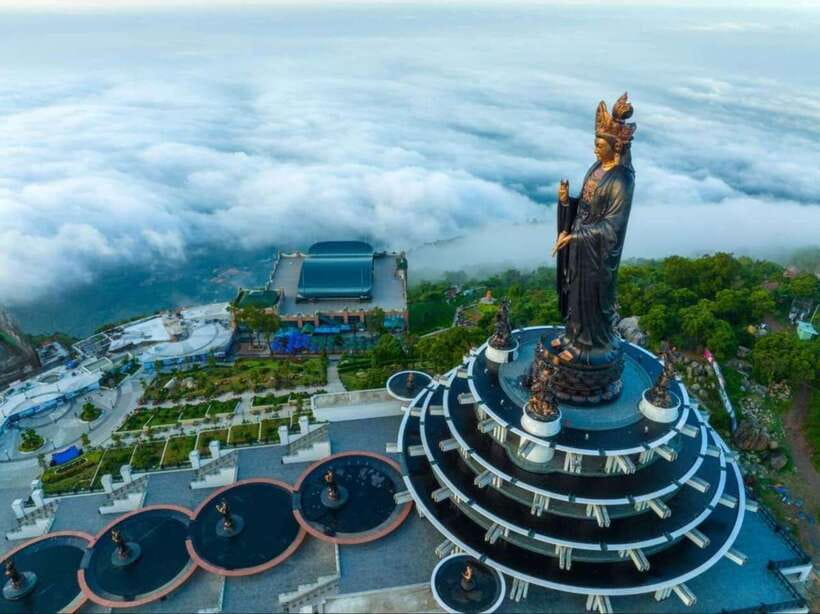
-
The Cu Chi Tunnels, an extensive underground network used by Vietnamese soldiers during the war, can be explored through a private tour from Ho Chi Minh City.
-
The Cao Dai Temple, the spiritual headquarters of the Cao Dai religion in Tay Ninh, blends elements of various faiths and features unique, colorful architecture.
-
Visitors can observe the noon prayer session at the Cao Dai Temple, which showcases the rituals and chants of this syncretic religion.
-
The tour includes sampling traditional wartime foods like boiled tapioca, providing insight into the struggles and resourcefulness of Vietnamese soldiers during the conflict.
-
The tour is not suitable for children under 6, claustrophobic individuals, or wheelchair users, and comfortable shoes are recommended for navigating the Cu Chi Tunnels.
Tour Overview
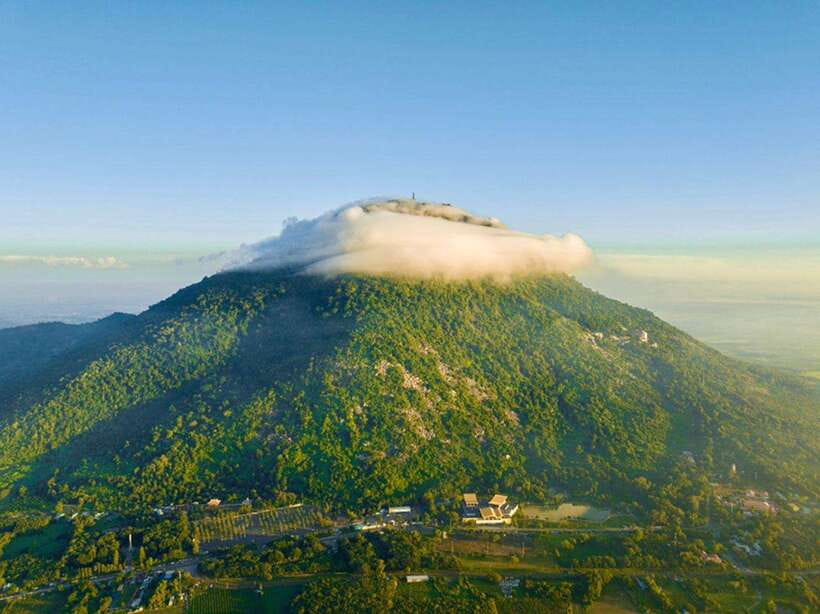
This private tour from Ho Chi Minh City offers visitors the opportunity to explore two of the region’s most iconic attractions – the Cu Chi Tunnels and the Cao Dai Temple.
The one-day adventure includes round-trip transportation, an English-speaking guide, and entrance fees. Visitors will observe the unique Cao Dai religion during the noon prayer session and crawl through the historic underground tunnels used by Vietnamese soldiers.
This one-day adventure includes round-trip transportation, an English-speaking guide, and entrance fees. Visitors will observe the unique Cao Dai religion and crawl through historic tunnels.
A light snack and lunch are provided. While suitable for most ages, the tour isn’t recommended for children under 6, the claustrophobic, or wheelchair users.
Optional rifle shooting is available for an additional fee.
You can also read our reviews of more tours and experiences in Ho Chi Minh City.
Cao Dai Temple

The Cao Dai Temple in Tay Ninh is the spiritual headquarters of the Cao Dai religion, which blends elements of Buddhism, Taoism, Confucianism, and Christianity.
Visitors can observe the unique architecture of the temple, adorned with colorful and intricate designs. During the noon prayer session, they can witness the Cao Dai followers performing their rituals and chants.
The temple’s interior features a harmonious fusion of religious symbols, creating a visually stunning experience. Attending the prayer session is a highlight, offering a glimpse into the spiritual practices of this fascinating blend of Eastern and Western belief systems.
Cu Chi Tunnels
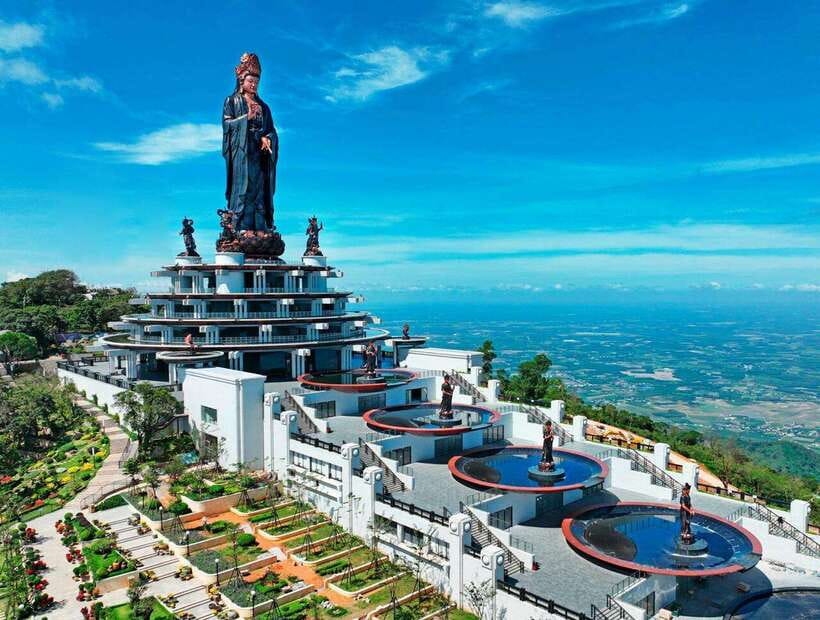
Exploring the extensive underground network of the Cu Chi Tunnels is a captivating experience on this tour. Visitors can crawl through the narrow, hand-made tunnels and watch a documentary film about their historical significance. The tunnels were an ingenious feat of engineering, used by Vietnamese soldiers during the war to move troops and supplies, and mount surprise attacks. Visitors can also sample traditional wartime foods, like boiled tapioca with hot pandanus tea.
| Highlights | Description |
|————|————-|
| Tunnel Network | Explore the expansive underground tunnel system |
| War Remnants | Learn about the tunnels’ historical importance |
| Local Cuisine | Taste traditional wartime foods |
Local Cuisine
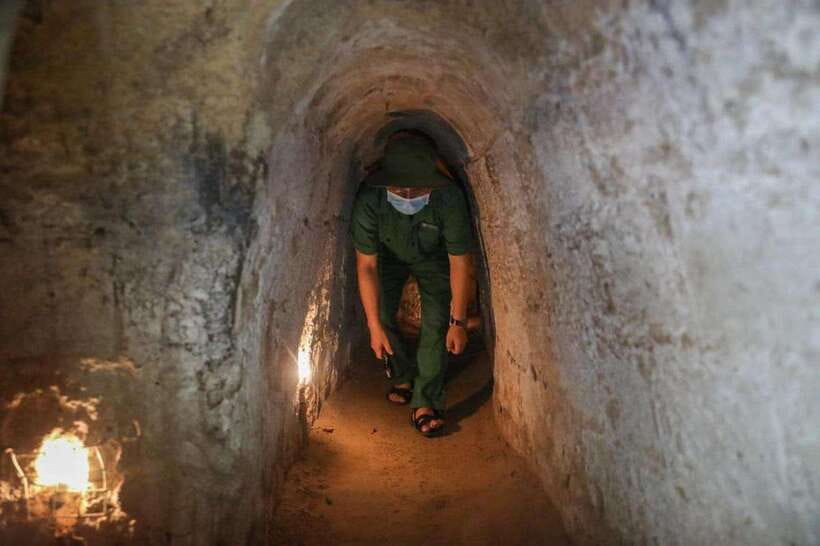
Visitors on the tour can savor traditional foods eaten by Vietnamese soldiers during the war, including boiled tapioca with hot pandanus tea.
This simple yet hearty meal sustained the fighters in the Cu Chi tunnels. Tapioca, a starchy root vegetable, provided essential carbohydrates, while the pandanus-infused tea offered a soothing, fragrant beverage.
These humble ingredients reflect the resourcefulness and resilience of the Vietnamese people, who made the most of limited wartime provisions.
Tasting these dishes allows travelers to connect with the daily lives and struggles of those who lived through the conflict in this region.
More Great Tours NearbyInclusions
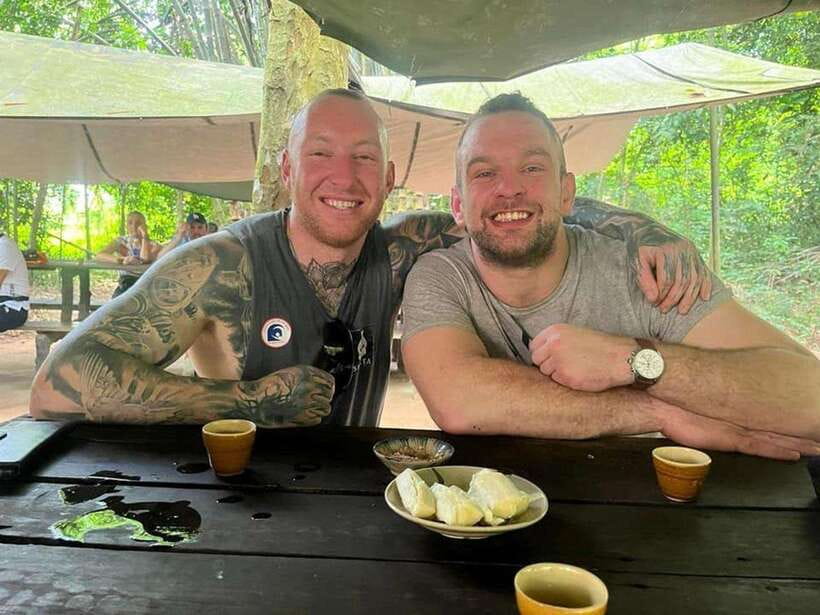
This private tour from Ho Chi Minh City includes an air-conditioned private car with pick-up and drop-off in central Saigon.
An English-speaking guide accompanies visitors throughout the day. Entrance fees to the Cu Chi Tunnels are covered, and a light snack of tapioca and tea is provided at the tunnels. Lunch is also included.
For those interested, there’s an optional shooting experience with AK47 or MK16 rifles, though this carries an additional surcharge.
However, the tour isn’t suitable for young children, those with claustrophobia, or wheelchair users. Visitors should wear comfortable shoes and bring a hat, camera, sunscreen, and water.
- A Taste of Vietnam
- Small-group Mekong Delta Day Trip: Boat Ride, Village & Cooking
- Full Day Experience Mekong Delta By Bike, Boat and Kayak.
- Saigon By Night and Street Food By Motorbike |Opt: Ao Dai Riders
- Cu Chi Tunnels Small Group Tour – Morning Trip With English Guide
- Private Insight Mekong Delta (Day Trip)
Optional Activities
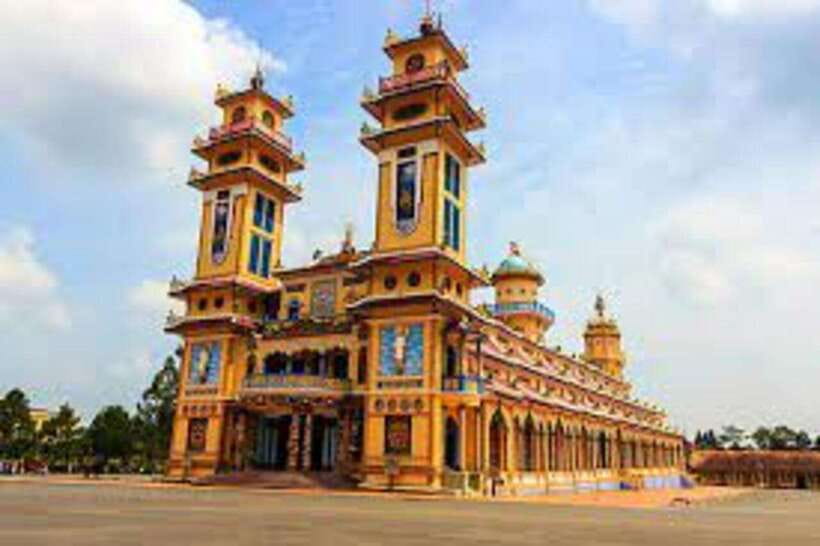
For those interested, the tour offers an optional shooting experience with AK47 or MK16 rifles in a supervised area, though this carries an additional surcharge. This thrilling activity allows visitors to get a taste of the firepower used during the Vietnam War.
| Weapon | Rounds | Price |
| — | — | — |
| AK47 | 10 | $15 |
| MK16 | 10 | $20 |
| AK47 | 30 | $40 |
| MK16 | 30 | $50 |
| Combination | 20 (10 each) | $30 |
Participants will receive instructions from trained professionals and can enjoy this unique opportunity to fire these historic weapons in a safe and controlled setting.
Important Information
Although the tour isn’t suitable for children under 6 years, individuals with claustrophobia, or wheelchair users, visitors are encouraged to wear comfortable shoes, a hat, and bring a camera, sunscreen, and water.
Smoking and flash photography are prohibited.
Key requirements for this tour are:
-
Comfortable shoes for navigating the tunnel system.
-
Hat and sunscreen to protect from the sun.
-
Camera to capture the unique architecture and historical significance of the sites.
Visitors should be prepared for an immersive experience exploring the iconic Cu Chi Tunnels and Cao Dai Temple.
Getting to Ho Chi Minh City
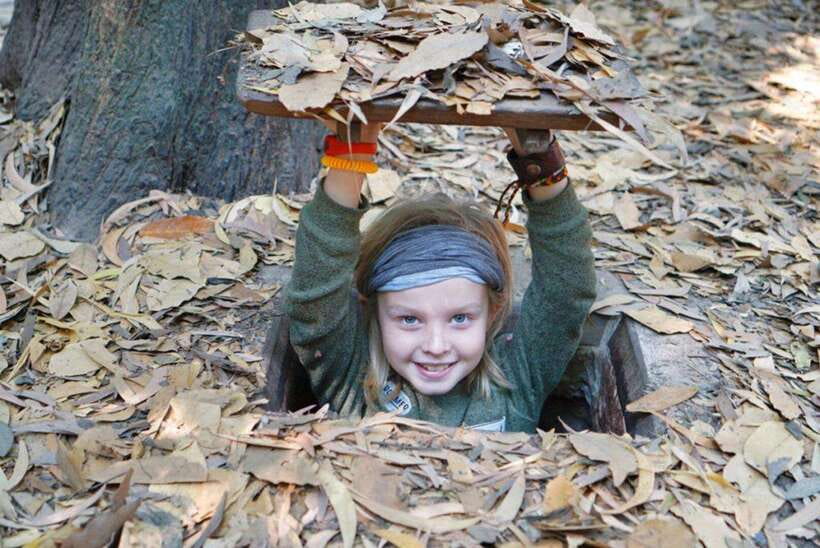
Ho Chi Minh City, formerly known as Saigon, is one of the most vibrant and dynamic cities in Southeast Asia. The city is well-connected to the rest of the world, with its international airport serving as a major hub.
Visitors can reach Ho Chi Minh City by air, with direct flights from many major cities. Alternatively, travelers can arrive by train or bus from neighboring countries like Cambodia and Thailand.
The city’s metro system is currently under construction, but the existing bus network and taxis provide convenient transportation options within the city.
With its rich history and modern amenities, Ho Chi Minh City is an exciting destination for travelers.
Frequently Asked Questions
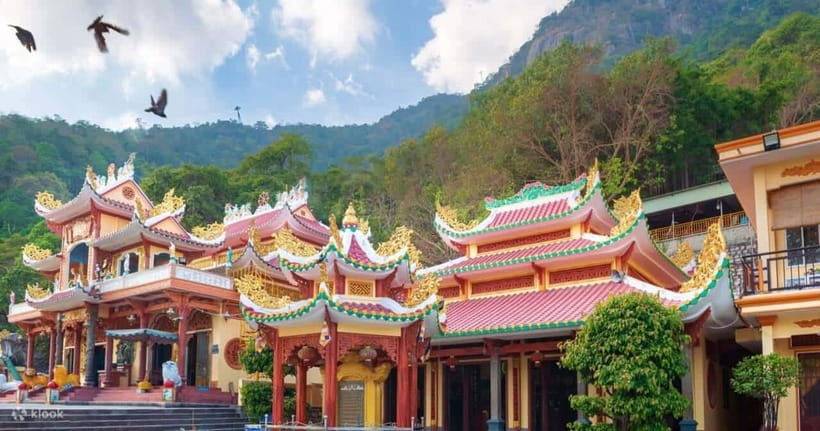
What Is the Best Time of Year to Visit Ho Chi Minh City?
The best time to visit Ho Chi Minh City is during the dry season from November to April when temperatures are mild and rainfall is lower. This is the peak tourist season, so travelers should book accommodations and tours in advance.
Can I Extend My Stay and Visit Other Regions of Vietnam?
Absolutely! After visiting the highlights in Ho Chi Minh City, travelers can extend their stay and explore other regions of Vietnam. With proper planning, they can experience the country’s diverse landscapes, culture, and cuisine.
Do I Need a Visa to Enter Ho Chi Minh City?
Yes, most travelers will need a visa to enter Ho Chi Minh City. Visitors should check the current visa requirements for Vietnam based on their nationality and plan ahead to obtain the necessary documentation before their trip.
What Is the Local Currency and Can I Use My Credit Card?
The local currency in Ho Chi Minh City is the Vietnamese Dong. While credit cards are generally accepted, it’s best to carry some cash as well, as not all vendors may accept cards.
Are There Any Health or Safety Concerns I Should Be Aware Of?
There are some health and safety concerns visitors should be aware of. The tour involves navigating tight, confined spaces in the Cu Chi Tunnels, which may not be suitable for those with claustrophobia. Proper protective gear and caution are advised.
The Sum Up
Ho Chi Minh City’s attractions offer a profound glimpse into Vietnam’s history and spirituality. The Cu Chi Tunnels reveal the resilience of its people, while the Cao Dai Temple showcases a unique fusion of beliefs through its captivating architecture and rituals. Together, these sites provide an insightful exploration of the country’s rich cultural heritage, leaving visitors with a deeper understanding of Vietnam’s past and present.
You can check availability for your dates here:More Tour Reviews in Ho Chi Minh City
- Mekong Delta Full Day – My Tho & Ben Tre – Four Islands Tour
- Cu Chi Tunnels, Cao Dai Temple, Ba Den Mountain Full Day
- Ho Chi Minh City: Mekong Delta Day Trip With Lunch & Drinks
- Saigon at Sunset: Ultimate Street Food Experience
- Ho Chi Minh City: Top Sightseeing Saigon Trip & History Tour
- Private Cooking Class Tour With Female Guide In Ho Chi Minh
Not for you? Here's more nearby things to do in Ho Chi Minh City we have reviewed
- Mekong Delta Full Day – My Tho & Ben Tre – Four Islands Tour
- Cu Chi Tunnels, Cao Dai Temple, Ba Den Mountain Full Day
- Ho Chi Minh City: Mekong Delta Day Trip With Lunch & Drinks
- Saigon at Sunset: Ultimate Street Food Experience
- Ho Chi Minh City: Top Sightseeing Saigon Trip & History Tour
- Private Cooking Class Tour With Female Guide In Ho Chi Minh
- Ho Chi Minh City Sightseeing Full-Day Tour With Great Guide
- Essential Mekong Delta: Highlight Tour From Ho Chi Minh City
- Cu Chi Tunnels, Cao Dai Temple, Ba Den Mountain Full Day
- Fastrack at Cam Ranh ( CXR) International Airport (Option)
- Vietnamese Craft Liquor Tasting Led by Food & Drink Writer
- HCM: 2-Day Mekong Floating Market With Cooking & Bike Ride
